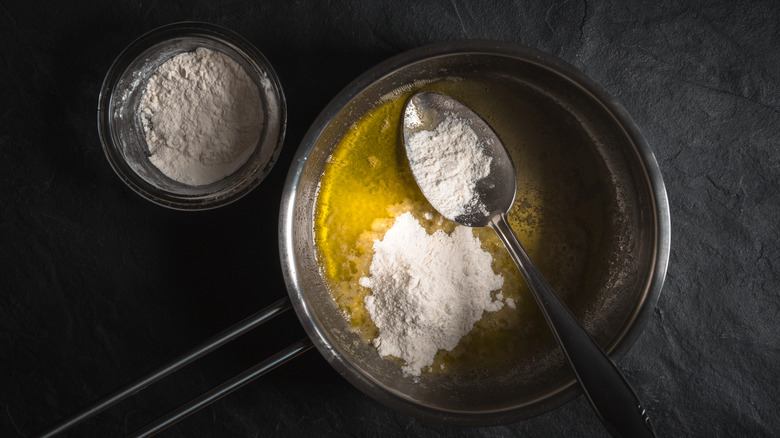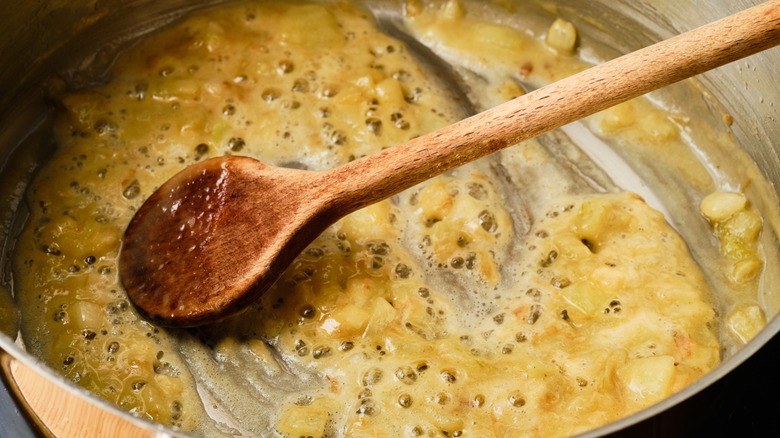How Long To Cook Roux For A Velvety Texture
In terms of ingredients, a roux isn't complicated, but it can be quite tricky to execute. Although the recipe simply requires cooking equal parts of fat and flour until combined, many factors can impact the color, flavor, and, most importantly, texture. Since its primary function is to improve sauces by thickening them, a roux must have the smoothest consistency possible. And the key achieving that is to allow your senses to help determine how long you should let the roux cook.
Unfortunately, we cannot recommend a specific interval of time, as this depends on the type of roux being made. Instead, it's best to let the aroma dictate the cooking time. Once the smell of raw flour dissipates and the roux takes on a toasty, doughy fragrance — even the lightest varieties should smell subtly nutty — this is a good sign that ingredients have combined seamlessly and cooked thoroughly. After reaching this aromatic sweet spot, the roux can continue being whisked until it reaches the desired hue, or it can be immediately worked into your liquid of choice.
Making a clump-free roux is all in the subtle details
While aroma is one of the biggest clues to help determine whether roux is cooked enough to your liking, that's not the only indicator that the mixture is on its way to becoming oh-so-silky. Your sense of sight can also be an equally useful tool. As measured amounts of fat and (ideally, white) flour are whisked together over moderately low heat, keeping an eye on the roux's color is also key. For example, a white roux that's used as a base for gravy should turn from a porcelain white to a pale yellow when it's properly cooked, whereas a dark brown roux that's typical for gumbos should be whisked until it turns the same shade as a bar of chocolate.
Once ready to use, always allow the roux and the liquid to which you plan to add it to simmer once combined. Again, there isn't a definitive timeframe for how long this should take, but generally, around 15 minutes will do the trick. As the mixture starts to become fragrant and glossy, this is a sign that flavors have melded and that any grittiness has vanished.

